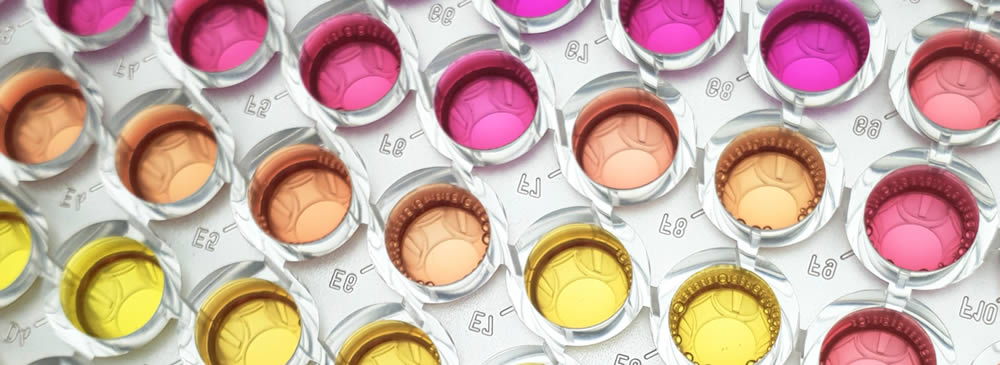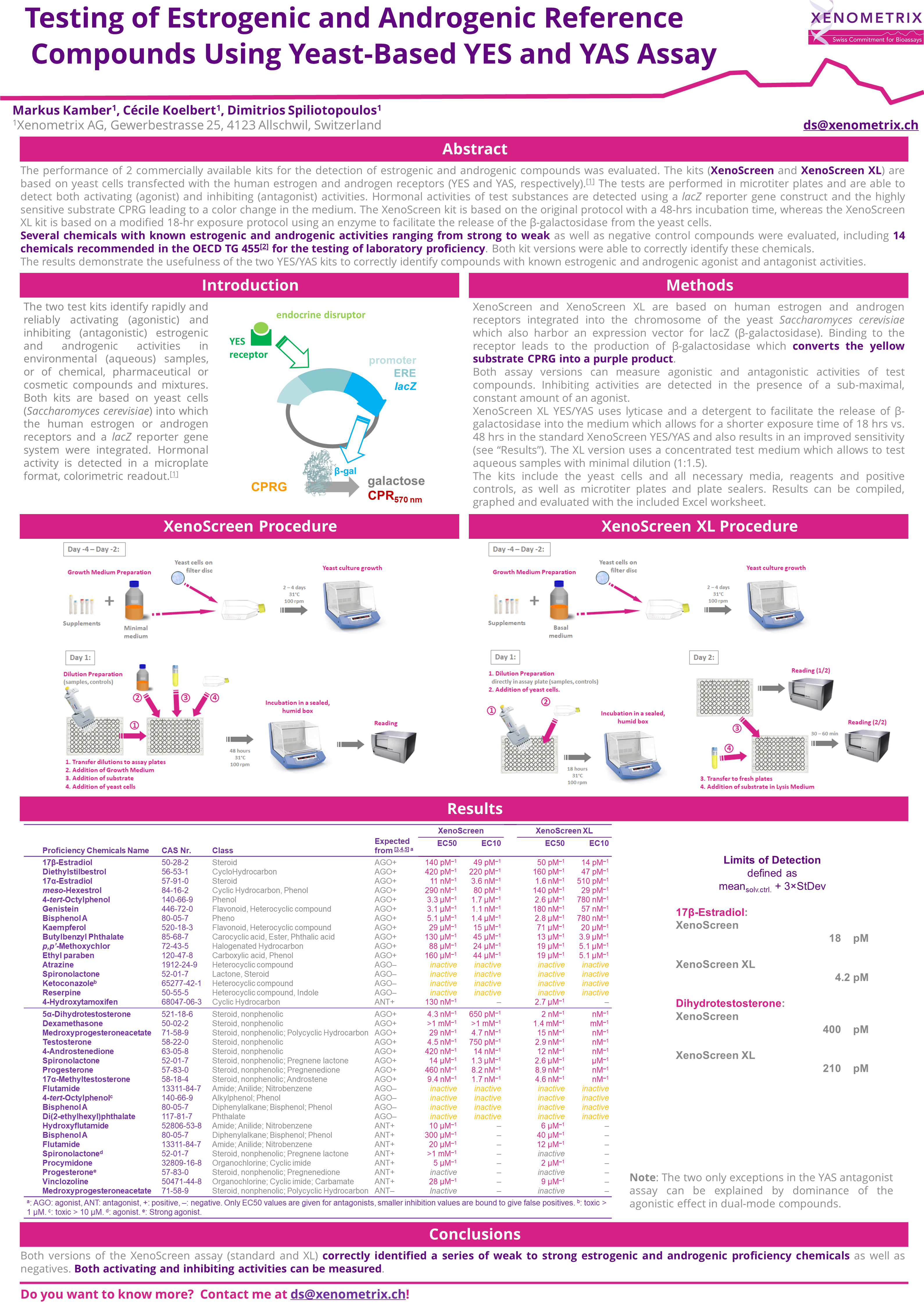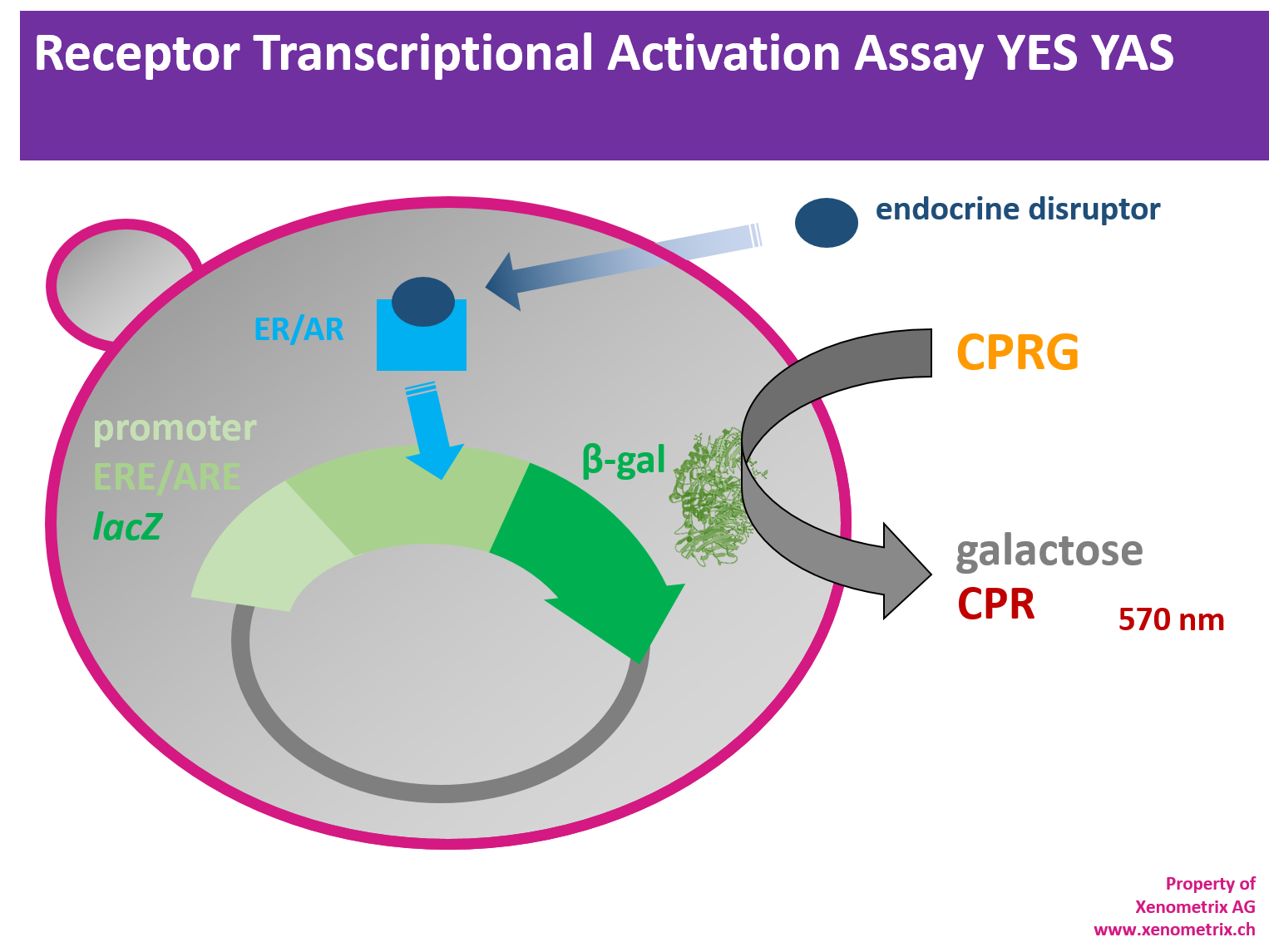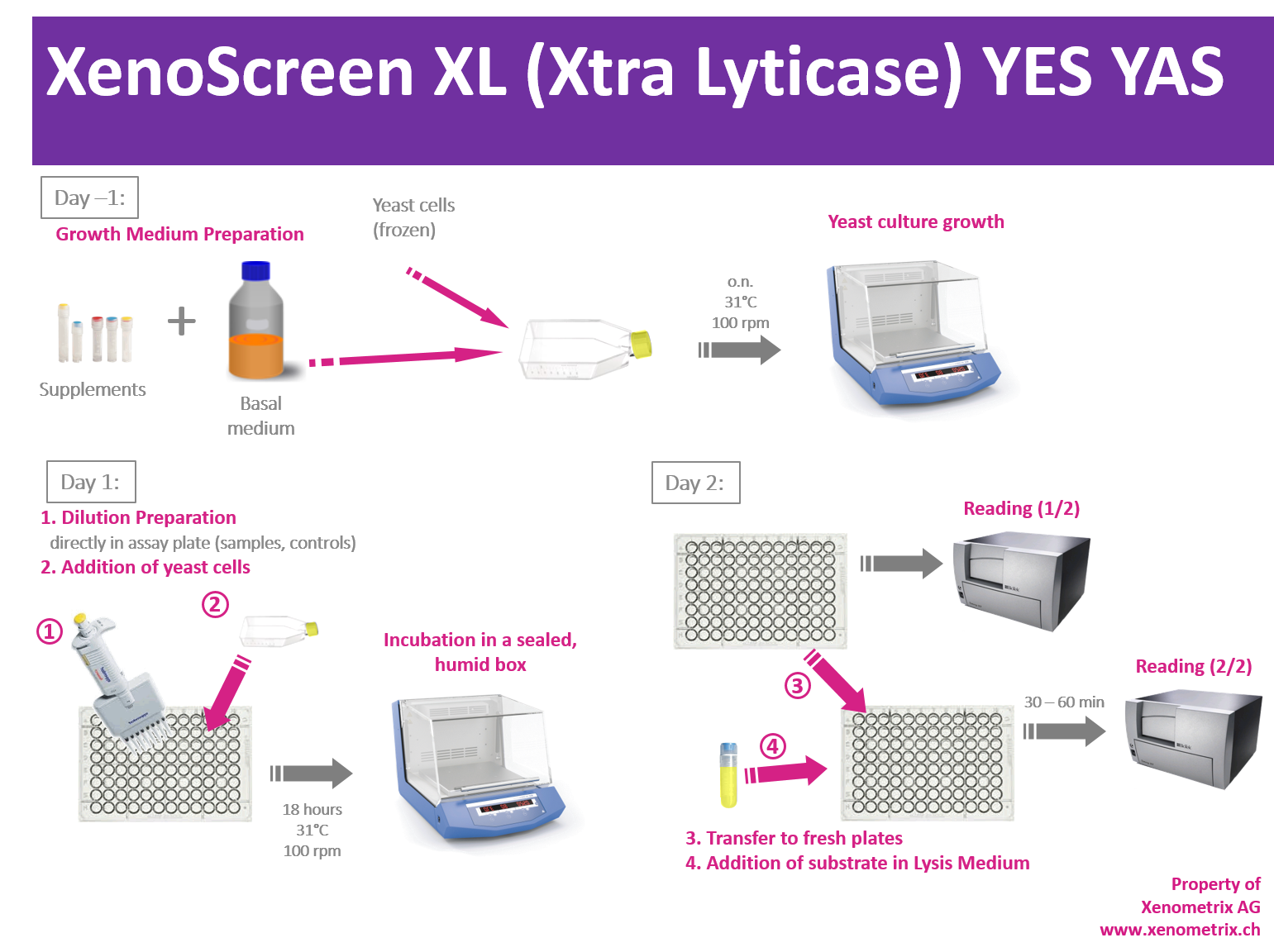
Estrogen- Androgen Screening Tests for Endocrine Disruptor Chemicals EDC
XenoScreen YES/YAS – Principle of the Estrogen-, Androgen- Screen Tests to detect Endocrine Disruptor Chemicals EDC – OECD TG455
There are many natural as well as synthetic chemicals or mixtures with a potential risk to interfere with the endocrine system in bacterial, yeast or mammalian cells, named endocrine disruptor chemicals (EDC). These compounds mimic or inhibit the natural hormones occurring in the body and thus may impair the development, reproduction and health of individuals. Natural hormones are for example oestrogens or steroid hormones produced by the body but also plants synthesize endocrine disruptor chemicals like phyto-oestrogens. There are many synthetic compounds with properties interfering in the hormone system, like oral contraceptives, UV filters in sun creams, flame retardants, detergents, pesticides, herbicides or insecticides, PCB, Bisphenol A or Phthalates in plastic ware. Most of the endocrine disruptive compounds end in the waterbodies due to lack of filter for micropolutants in the wastewater treatment plants.
There are many different in vitro and in vivo detection methods used to screen for endocrine disruptors, although the effective concentration of these chemicals can be as low as < 1 ng/L. Methods like chromatography or LC-MS may be limiting for the detection of such low quantities and the additive effects of different hormonally active compounds observed cannot be identified. With in vitro cell based assays very low concentrations of the chemicals as well as the additive effect of different hormones with identical mode of action can be detected. There are several in vitro assay technologies available, such as receptor binding assays, receptor transcriptional activation assay, steroid genesis test or aromatase assay. In vivo assays include amphibia (amphibian metamorphosis assay), fish (Short Term Reproduction Assay) or test animals (Rat Hershberger Assay, Rat Uterotrophic Assay).
The in vitro yeast based assay includes two yeast strains, named YES (Yeast Estrogen Screen) and YAS (Yeast Androgen Screen). These strains were generated and include a reporter gene and either the human estrogen (YES) or the human androgen (YAS) receptor gene. In the presence of endocrine disruptors (either agonists or antagonists), these cells will activate the transcription and synthesize β-galactosidase.
A test sample’s estrogen and androgen endocrine disruptor potential is assessed by exposing these yeast cells to varying concentrations of sample and observing the conversion of a chromogenic substrate. Endocrine disruptors will interact with the receptor (either estrogen or androgen receptor) and lead to an alteration of the β-galactosidase expression. Comparison of color development using a plate reader at two wavelengths will allow for a sensitive and quantitative evaluation of the sample’s endocrine disrupting properties.
XenoScreen XL (Xtra Lyticase) YES/YAS – Description of the Endocrine Disruptor Assay with yeast strains
In the receptor transcriptional activation assay, YES (Yeast Estrogen Screen) and YAS (Yeast Androgen Screen) cells are exposed to 8 concentrations of a test sample, as well as a positive and a negative control, for 18 hours (XenoScreen XL YES YAS). After exposure, the β-galactosidase expression is assessed via a chromogenic substrate. Each dose is tested in duplicate to allow for statistical analysis of the data.
A dose-dependent and significant increase or decrease in the color development relative to the corresponding negative control upon exposure indicates that the sample acts as an endocrine disruptor. Comparison with standardized positive controls (tested in multiple doses) allows for a quantification of the endocrine disrupting properties in terms of EC10, EC50 of EEQ/AEQ.
Several different guidelines for the detection of endocrine disruptive chemicals are available:
Proficiency chemicals have been tested with XenoScreen XL (Xtra Lyticase) YES YAS. The assay kit correctly identifies strong to weak estrogenic and androgenic chemicals. Both activating and inhibiting activities can be measured.

XenoScreen Tester Strains – References
- Routledge EJ and Sumpter JP. 1996. Estrogenic activity of surfactants and some of their degradation products assessed using a recombinant yeast screen. Environ Toxicol Chem. 13:241–248.
- Sohoni P and Sumpter JP. 1998. Several environmental oestrogens are also anti-androgens. Endocrinol. 158:327–339.
- Schultis T and Metzger JW. 2004. Determination of estrogenic activity by LYES-assay (yeast estrogen screen-assay assisted by enzymatic digestion with lyticase). Chemosphere. 57:1649–1655.

 Navigation
Navigation
